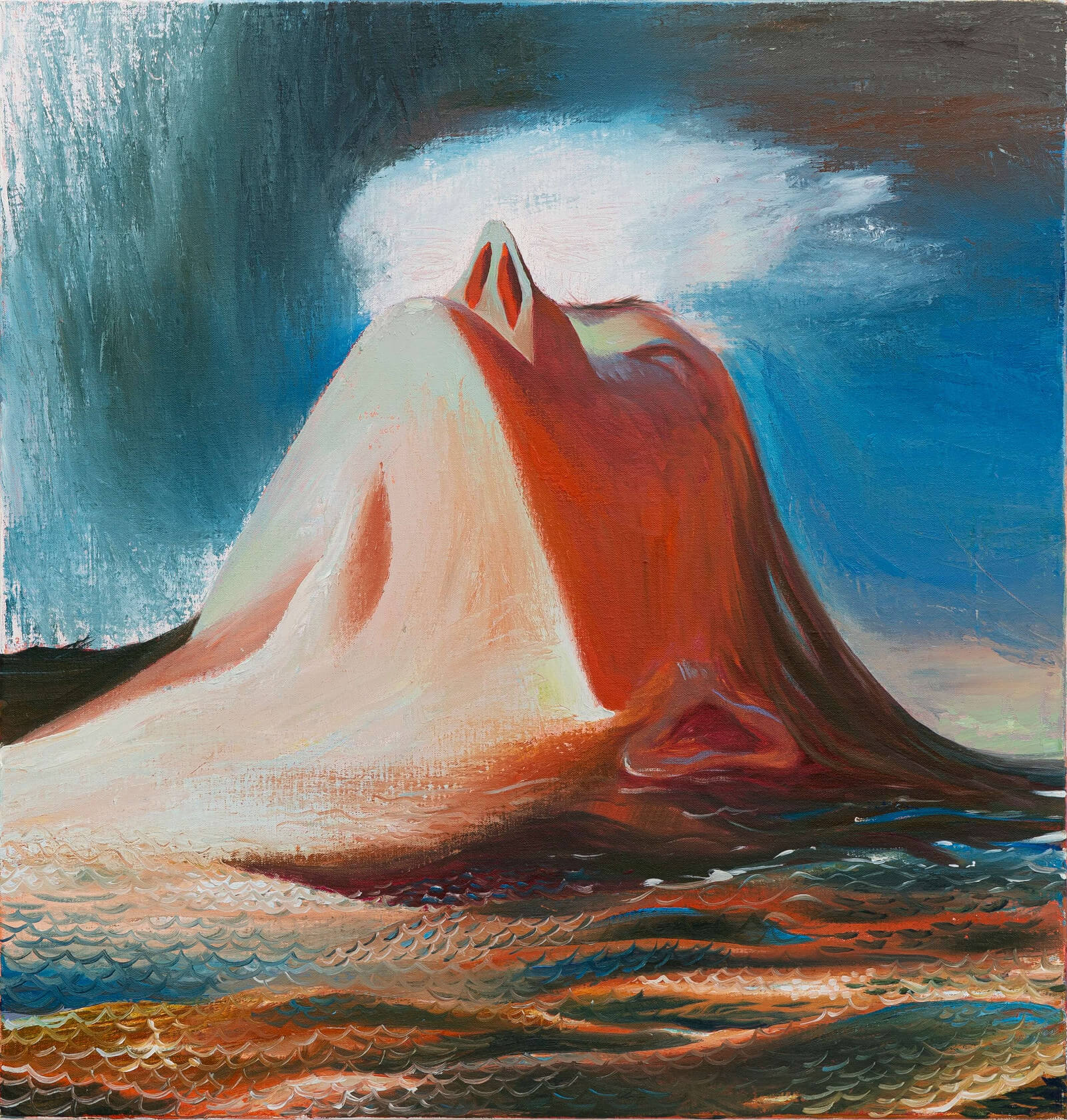Laurent Proux
I’d put you in a mirror
➝ Download Press Release
Reality may be inapprehensible. Formed by incalculable elements, it insists on not allowing itself to crystallize into a single concept, object, or mood; it avoids reductions. After all, reality is all of that and much more. It also encompasses the invisible, from cells to atoms, ghosts and spirits, depending on the eye of the beholder. But it also includes the unnamable, that is, those aspects that escape our reasoning capabilities. How do you call that which avoids apprehension? Therefore, trying to capture reality, it seems, is an undertaking doomed to fail. Yet hopelessness shouldn’t stop one from acting—as artists have demonstrated throughout history.
Laurent Proux creates what art history tends to call “figurative painting.” Paintings that attempt to represent what we see through colors, figures, perspective. They create a pictorial illusion, and we accept that illusion as being a vision of our world—an interpretation of reality. To that effect, several aspects testify to Proux’s figurative leaning. There are, for instance, recognizable characters in his canvases, and several of these people are performing their jobs, which lets us envision the space where this action unfolds. So, we have people moving around in places. It’s worth paying attention, in this respect, to the market dynamic at hand: little groups of mixed ethnic backgrounds working at a textile industry. Here, content and form unite in remarkable fashion.
Little represented in painting in general, work is fundamentally part of our world and, above all, the world that informs Proux’s paintings. So much that one of his most significant influences, precisely in Les ouvrières du Textile III, is the 1927 painting Textile Workers by the Russian painter Alexandre Deïneka (1899 – 1969). As in this socialist realist work, Proux eliminates the fourth wall separating us from the workers, allowing us to examine their routines closely (women in barefoot, contained in both canvases, are also a clear reference). But there’s an essential difference between the two, as Proux points out: “My representation of the factory is intended to be less utopian than that of Deïneka: the bodies have a more material dimension, more marked and more tired. However, I seek to put the human at the center of the painting, not the machine, a position that I find evident in Deïneka’s composition.”
Furthermore, a factory is the epicenter of not only the production of goods that inaugurated our modern times but also, above all, the production center of a new form of working, a new discipline that would eventually teach us how to establish a new relationship with time, with new social dynamics, and that would teach us to observe hierarchies. In this regard, the figures, themes, and objects inside the factory in Proux’s canvases are represented through a gestural discipline employed by the artist himself—note the geometrical occurrences, like the triangular patch of sunlight on the floor of a painting, or the square format of a dirty floor on another. These scenes, despite the movement of a busy workday, the chaos of deadlines, and unpredictability, are organized by way of the same kind of discipline and control that a factory demands of its workers. Painterly discipline emulates working discipline.
But this exhibition—Laurent Proux’s first one with GNYP Gallery Berlin—is also made of other paintings, paintings a little less at ease with the figurative ideal. They are canvases populated by different forms of images, images found in our dreams or from our mythologies. In any case, not images found in reality in any ordinary way. Incredible and ambiguous landscapes, organized by autapomorphic relations: people that are mountains and that are also waves. In short, the world itself, where the divisions of labor, objects, subjects, time, and lights are fused in an ethereal dreamscape. The painterly gesture, in this case, is freer, bolder. Like, indeed, a dream.
Last but not least, the characters in both these dreamlike and figurative paintings are the same size, indicating, to the artist, “as if the paintings were theaters, and so, the figures could go from one canvas to the other.” Hence, an exchange is at hand, a bridge between those two worlds we all inhabit. That is, the world of our everyday jobs and tasks, ordered by our concrete relationship with practical matters, is permeable to the world made out of our dreams and ideas. In this regard, Proux seems to indicate that reality is, in effect, the distanced yet close connection between those two spheres. Our ideas and dreams, imagination and fantasy, after all, are also part of reality. And maybe it is, even if only for a fleeting second— most of all when art transcends concepts, and all we can do is abandon words and look.
João Gabriel Rizek

